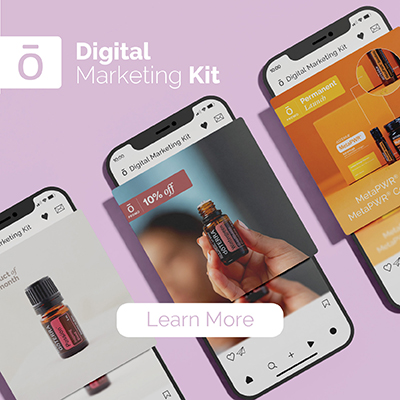Origin: a Latin derivative
meaning "Gift of the Earth."
How Do I Use Essential Oils Safely?
Traditionally, certain essential oil application methods have been preferred or used exclusively. However, as the research surrounding essential oils continues to develop, a greater understanding of application methods is now understood. Essential oils are usually delivered by one of three methods: aromatically, applied topically to the skin, or added to flavour food. They can be used a single oil at a time or in complex blends.
Aromatic
The sense of smell is a tool that can elicit powerful responses. Smell can affect emotions, behaviour, and memory. For this reason, essential oils can be quite powerful.
Some essential oils induce uplifting or invigorating effects, while others are more calming. Diffusion is one of the simplest methods for using essential oils aromatically. Diffusers that use cold air or water are ideal. However, using essential oils aromatically does not require any special diffusing devices.
You can achieve the same benefits by simply placing a few drops of essential oils in the palm of your hand, bring to your nose and inhale.
Additional aromatic uses For Essential Oils Include:
- Apply oil to a cotton ball and place in the air vents of your vehicle
- Mix oils in a spray bottle with water and mist over furniture, carpet, or linens
- Add oil to a batch of laundry or to dryer sheets
- Use in household surface cleaners
Topical
Topical application is a very effective method for applying essential oils. Because essential oils have low molecular weights and are lipid soluble, they can stay on your skin.
To decrease the likelihood of developing a skin sensitivity, especially for sensitive skin, it is advisable to use a carrier oil (such as Fractionated Coconut Oil) to dilute oils and when trying an oil for the first time. The recommend dilution ratio is typically one drop of essential oil to three drops of carrier oil.It’s always advisable to use several small doses throughout the day rather than a single large dose. Start with the lowest possible dose (1–2 drops). A topical dose can be repeated a couple of times a day. Because every individual is unique, the dose can vary between individuals based on size, age, and overall health status.
Beneficial Areas You Can Apply Essential Oils
- Neck
- Forehead and temples
- Chest and abdomen
- Arms, legs, bottom of feet
Other Effective Methods of Topical Application
- Add a few drops of oil to a warm bath
- Make a hot or cold compress by soaking a towel or cloth in water, adding essential oils, and then applying to the desired area
- Add oil to a lotion or moisturiser and then apply to skin
Sensitive Areas to be Avoided:
- Some facial areas, such as the skin around the eyes
- Eyes and inner ears
- Broken, damaged, or otherwise injured skin
Always look at the product label or Product Information Page (PIP) on the website for how each essential oil can be used.
Food Flavour*
Certain flavours have a rich culinary history and some essential oils can be used as food flavours. When you sip a mug of peppermint tea, or add fresh herbs to your pasta, you are actually consuming some aromatic essential oil compounds. These uses are safe when oils are used in appropriate quantities, in accordance with product labels.
Essential oils contribute many flavouring and aromatic properties to foods. However when used for food flavourings, essential oils should be added in very limited amounts due to their concentration and potency.
Essential oils are highly concentrated, so a little goes a long way. It is recommended that 1-2 drops is ideal to flavour food.
doTERRA essential oils for food flavouring meet the requirements of the Australia and New Zealand Food Standards Code for food additives.
Effective Ways to Flavour Food
- Use oils in recipes for cooking or baking to replace fresh or dried herbs and spices
- Remember that essential oils are much more potent than dried or fresh herbs and spices, so start with a very small amount
- For more potent oils, it may be better to add these by toothpicks (dip the end of a clean toothpick into the oil and then add to the food) rather than drops
- Add essential oils to water, smoothies, milk, tea, or other drinks
- Add a small amount of food flavour to yoghurt
*Oils for food flavouring meet the needs of the Australia and New Zealand food standards code for food additives.
Always look at the product label or Product Information Page (PIP) on the website for how each essential oil can be used.




